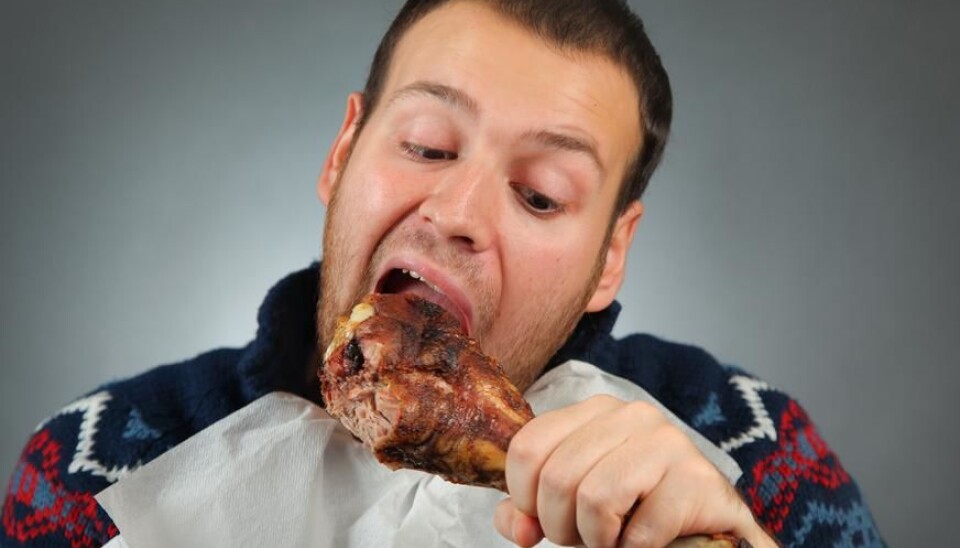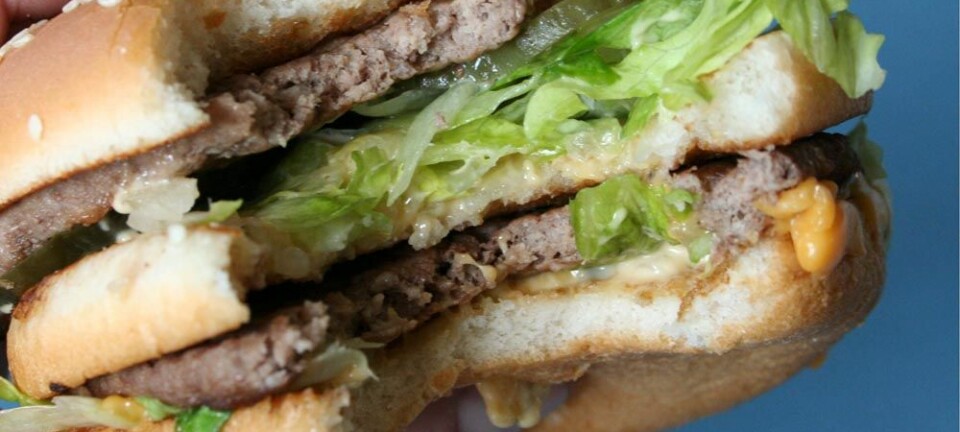
Paleo diet better for weight loss than nutrition recommendations
Obese people lose more weight, have less blood fat and get a more slender waist if they follow a Paleolithic-type diet rather than following the official Nordic Nutrition Recommendations, new study shows.
Evolution has not changed our biology much since the Stone Age. Some researchers therefore argue that it should be better for our bodies to do like our Stone Age ancestors and eat a diet consisting mainly of vegetables and meat, rather than a modern Western diet with starchy foods such as bread and pasta.
Now a study, published in The European Journal of Clinical Nutrition, shows that obese people actually lose more weight, have less blood fat and get a slimmer waist on a Paleolithic-type diet (PD) than on a diet that follows the Nordic Nutrition Recommendations (NNR).
”The Stone Age diet appears to have more beneficial health effects than the nutrition recommendations, at least for obese people. However, it is obviously important to figure out whether it is actually realistic to follow such a diet before you start recommending it over other diets,” says Thomas Meinert Larsen, an associate professor at the Department of Exercise and Sports Sciences at the University of Copenhagen. He researches into diet and obesity, but did not take part in this study.
Obese people benefit most from PD
Scientists from Umeå University in Sweden and Cambridge University, UK, divided 70 obese postmenopausal women into two groups.
The lower levels of triglycerides in the blood and the reduction of fat around the abdomen suggest that obese women who follow the PD reduce their risk of cardiovascular disease and diabetes, and that’s very positive.
Thomas Meinert Larsen
Both groups were allowed to eat the amount of food they wanted, but one group was asked to stick to the principles of a PD, while the other was put on a diet based on the NNR.
- After six months, the women in the PD group had lost an average of 6.2 kilos of total fat mass and had an 11-centimetre reduction in waist circumference.
- Meanwhile, the NNR group had only lost 2.6 kilos of total fat mass and their waist circumference decreased by 5.8 centimetres.
- All the women had their blood pressure, cholesterol levels and insulin sensitivity checked, but on these health parameters no significant differences were found. Both groups benefited from their diets.
- Triglyceride, or blood fat, levels decreased significantly in the PD group.
“The lower levels of triglycerides in the blood and the reduction of fat around the abdomen suggest that obese women who follow the PD reduce their risk of cardiovascular disease and diabetes, and that’s very positive,” says Larsen.
Findings apply to all obese people
Although the research team only used women aged around 60 in their study, the effect will probably also be seen in men and women of all ages, according to Inge Tetens, a professor at the Danish National Food Institute at the Technical University of Denmark. She did not take part in this study, but she helped develop the Nordic Nutrition Recommendations for 2013:
“The fact that we’re using postmenopausal women in our study is not central to our results. The weight loss and the slimmer waistline probably also apply to other obese people, as long as they follow the dietary principles,” she says.
The women did not eat enough protein
The women in the PD group were asked to divide their daily energy intake into 30 percent protein, 30 percent carbohydrates and 40 percent fat. Most of the fat should come from mono- and polyunsaturated fatty acids such as omega-3 from e.g. fish, avocadoes or olive oil.
The NNR group was asked to stick to a diet in which 15 percent of their daily energy intake came from proteins, 25-30 percent from fat and 55-60 percent from carbohydrates. This diet was rich in low-fat dairy products and fibre-rich cereals.
All participants had a dietician to coach and instruct them on how to follow their assigned diet.
“After six months, there was a greater weight loss and less blood fat in the PD group than in the NNR group, and this is without a doubt due to the change of diet,” says Tetens.
“An important thing to point out, however, is that there was no difference in nitrogen excretion between the two groups. This suggests that there was no significant difference in protein intake between the two groups. In other words, the PD group did not consume more proteins than the NNR group.”
Calorie deficiency may explain results
According to Larsen, protein intake does not explain why the women in the PD group had better results. It is more likely to have something to do with the amount of calories:
“A Stone Age diet is generally quite restrictive in relation to the nutrition recommendations, and if you’re not allowed to eat starchy foods and cereal grains and dairy products, it’s easier to end up with calorie deficit,” he says.
“And if you have calorie deficit, you lose weight and your blood fat levels decrease. That’s why it’s a good diet. In addition, a possible increased intake of saturated fat is not a problem for one’s cholesterol levels.”
---------------------
Read the Danish version of this article at videnskab.dk
Scientific links
External links
- Thomas Meinert Larsen’s profile
- Inge Tetens’ profile
- About the Nordic Nutrition Recommendations
- About the Paleo diet (Wiki)











